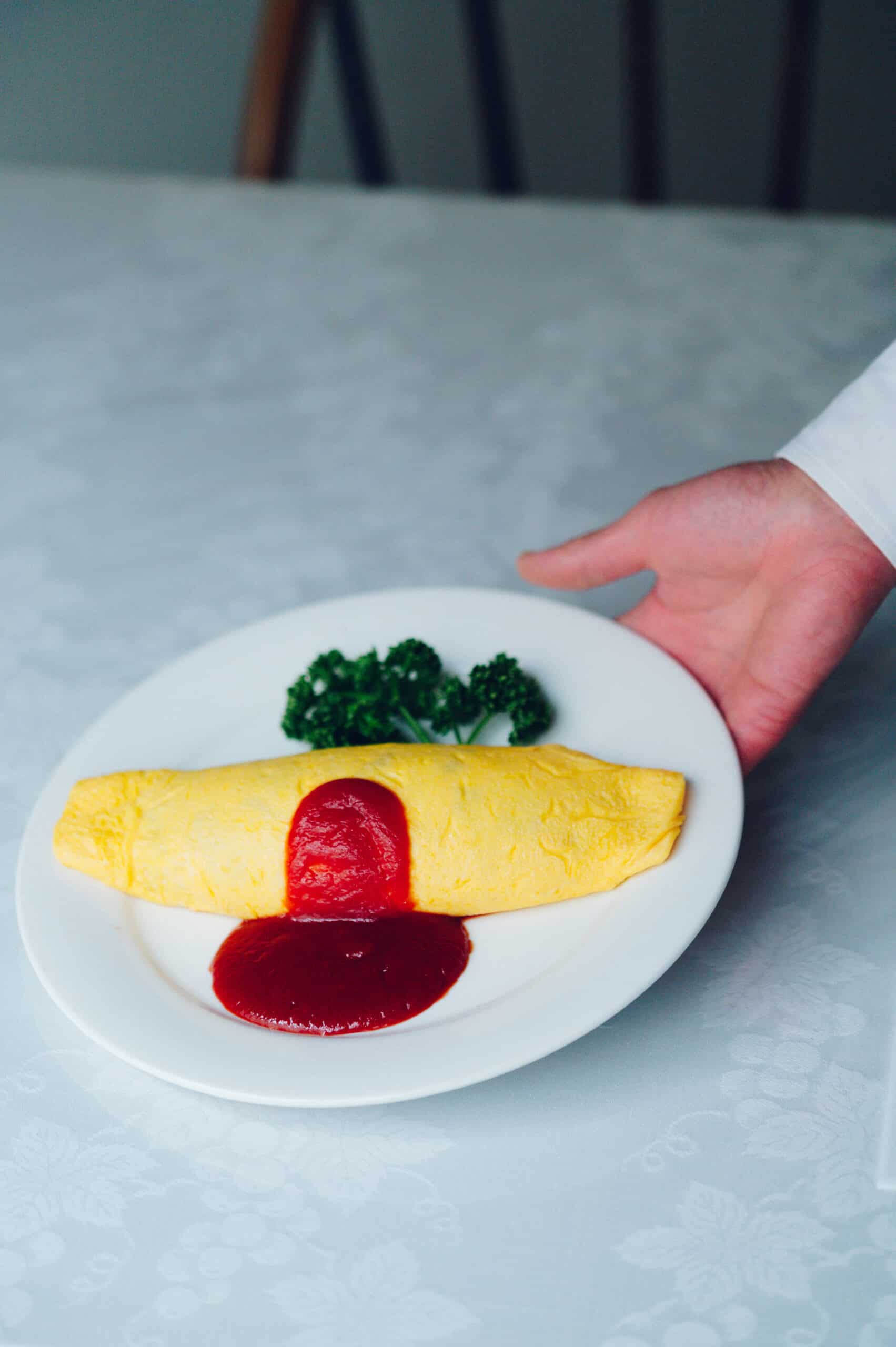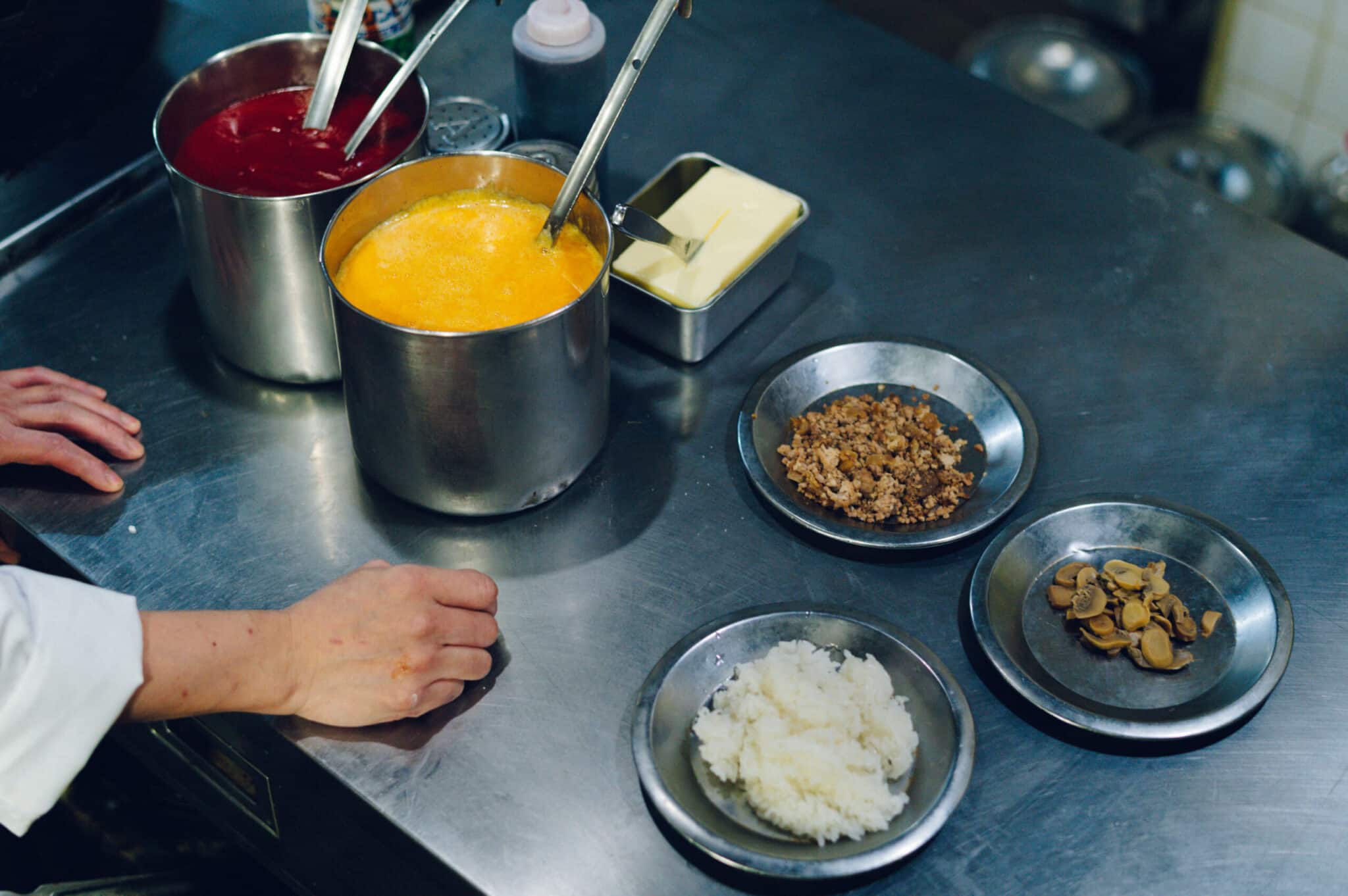CATEGORY
AREA

2025.03.22
When a spoon cuts into the silky, perfectly cooked egg, vibrant ketchup-seasoned chicken rice peeks through. With the first bite, the creamy egg melds with the sweet and savory chicken rice, creating a delightful harmony of flavors. Omurice is a uniquely Japanese egg dish, believed to have originated in Ginza as an evolution of Western-style omelets. The appeal of omurice lies in its simple yet satisfying combination of eggs and rice. To explore its history and charm, we visited the historic restaurant "Rengatei," known as the birthplace of omurice.
”Rengatei" is a long-established Western-style restaurant in Ginza, established 130 years ago in 1895. The name "Western-style restaurant" was a nickname given to the restaurant by familiar customers, and was a variation of "Seiyo Oryoriten," a restaurant at the time of its establishment that served French cuisine imported from the West. Nowadays, it is common to call such a restaurant a Western-style restaurant, but it was "Rengatei" that led to the spread of this terminology.
Omurice at "Rengatei" was born when chefs practicing Western-style omelets began mixing rice with eggs and cooking them together as a staff meal. This simple creation evolved into rice omelet, which later transformed into the modern omurice, where rice is wrapped in a thin layer of cooked egg. The dish quickly gained popularity and spread to various restaurants across Ginza.
When omurice first appeared in 1900 (Meiji 33), ketchup was not yet widely available, so the dish was served with demi-glace or tomato sauce. While ketchup has become the standard topping today, "Rengatei" has remained faithful to its original recipe, preserving the nostalgic flavors that continue to define omurice’s timeless appeal in Japan.
The rice in omurice is typically flavored with ketchup and includes chicken, but each restaurant has its own unique approach. At "Rengatei," finely chopped onions and ground beef are stir-fried with soy sauce and sugar before being combined with mushrooms and rice.
The use of soy sauce and sugar lends a distinctly Japanese flavor profile, which perfectly balances the tangy acidity of the ketchup added at the end. What sets "Rengatei’s" omurice apart is that soy sauce and sugar are the primary seasonings, with ketchup playing a subtle supporting role.
Omurice ingredients vary widely depending on the restaurant. Some substitute ham, bacon, or sausages for chicken, while others add vegetables like carrots or green peppers. Some even incorporate Worcestershire sauce or mayonnaise for a unique twist. Exploring different interpretations of omurice is part of the enjoyment of this beloved dish.
The heart of omurice is, without a doubt, the egg. The way the egg is cooked determines the final taste and texture of the dish. Some chefs say it takes three to five years to perfect the ideal omurice omelet.
At "Rengatei," fresh eggs are carefully strained for a silky texture, and approximately three large eggs (LL size) are used per serving. The eggs are cooked slowly over low heat while being continuously stirred with chopsticks. This meticulous process results in a smooth outer layer and a soft, custard-like interior. Such precision requires the expertise of a skilled chef.
Once the eggs are cooked to perfection, the rice is promptly placed in the center and wrapped. The omelet is shaped by gently tapping the frying pan while folding the edges, then flipped onto a plate in one swift motion. The ability to prepare omurice quickly and efficiently is another hallmark of a seasoned chef.
With its silky-smooth exterior and soft, custard-like interior, omurice offers the perfect balance of rich, buttery eggs, subtly sweet chicken rice, and the tangy contrast of ketchup. It’s a dish that remains irresistibly delicious, bite after bite.
In recent years, omurice has continued to evolve, with different styles emerging based on how the eggs are cooked. Some versions feature firmer omelets, while others are even softer and runnier than traditional omurice. Some restaurants opt to forgo wrapping the rice entirely, serving the omelet on top instead. In Ginza, the birthplace of omurice, countless renowned restaurants continue to offer their own creative takes on this classic dish. Be sure to explore and find your favorite style of omurice!






